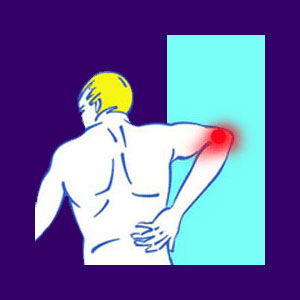
Elbow bursitis is one of the most obvious forms of the condition, since inflammation in the bursa can often be seen in abnormal swelling at skin level. This form of bursitis, also known as olecranon bursitis, affects the tissue which insulates the ulna from the attaching tendon. Unlike many other forms of bursitis, this form is characterized by the appearance of a reddish swelling sometimes jokingly known as “swellbow”.
Bursa degeneration in all its forms is normal and universal in the major joints of the body. Most cases are not painful and unless severe inflammation exists, there is no reason to believe that joint degeneration is inherently symptomatic.
This objective view of olecranon bursitis provides alternative explanations for pain that may not be related to elbow joint inflammation at all.
What is Elbow Bursitis?
Just like all forms of bursitis, elbow variations are due to the wearing away of the protective measures in the elbow joint. The loss of synovial fluid and deterioration of the bursa cause increased friction inside the joint, typically worsened by specific movements. While elbow joint degeneration is normal and expected, pain is only produced in a small percentage of affected people. Virtually every adult will demonstrate degeneration in the elbow, but most will never experience any significant pain.
Misdiagnosis is also very common with bursitis in the elbow, since many cases of regional ischemic tendonitis are mistakenly diagnosed as bursitis, especially when the external swelling is absent or minimal.
Elbow Pain Issues
The elbow joint is often thought to suffer from bursitis due to overuse and repetitive strain injury, sometimes called tennis elbow. In some scenarios, this scenario can actually occur, but many cases of chronic elbow pain are tendonitis conditions due to oxygen deprivation, rather than injury or overuse.
In cases of extreme swelling, the condition may be bursitis, but also may be a variety of autoimmune disorders, such as gout or rheumatoid arthritis. These conditions often have a mindbody origin and sometimes respond well to knowledge therapy, especially when traditional treatments fail.
Unfortunately, most diagnosticians will not consider or suggest this possibility, since it is well outside of their expertise and may even be outside their belief system if they are slaves to the Cartesian model of pain. In any case, it is definitely contrary to their economic bottom line.
Elbow Bursitis Help
Treatment for actual bursitis is effective in most cases, although completely alleviating the pain and swelling may take some time. Generally, ice, heat, pharmaceutical and injection therapies are the rule, with anti-inflammatory and steroidal medications being the most popular modalities.
For patients whose pain does not resolve and swelling is minor or absent, I urge researching the other possible explanations for the symptoms, since bursitis is diagnosed far more than it exists as the real source of elbow pain.
Some rare cases of joint bursitis may require surgical draining of the inflammation, which should resolve the condition rather quickly. However, in many cases, the inflammation returns, pointing to an anatomical or psychosomatic reason for the process to continue. In order to end the condition for good, this process must be discovered and rectified or the suffering will return again and again.
Back Pain > Psychologically Induced Pain Syndromes > Elbow Bursitis




